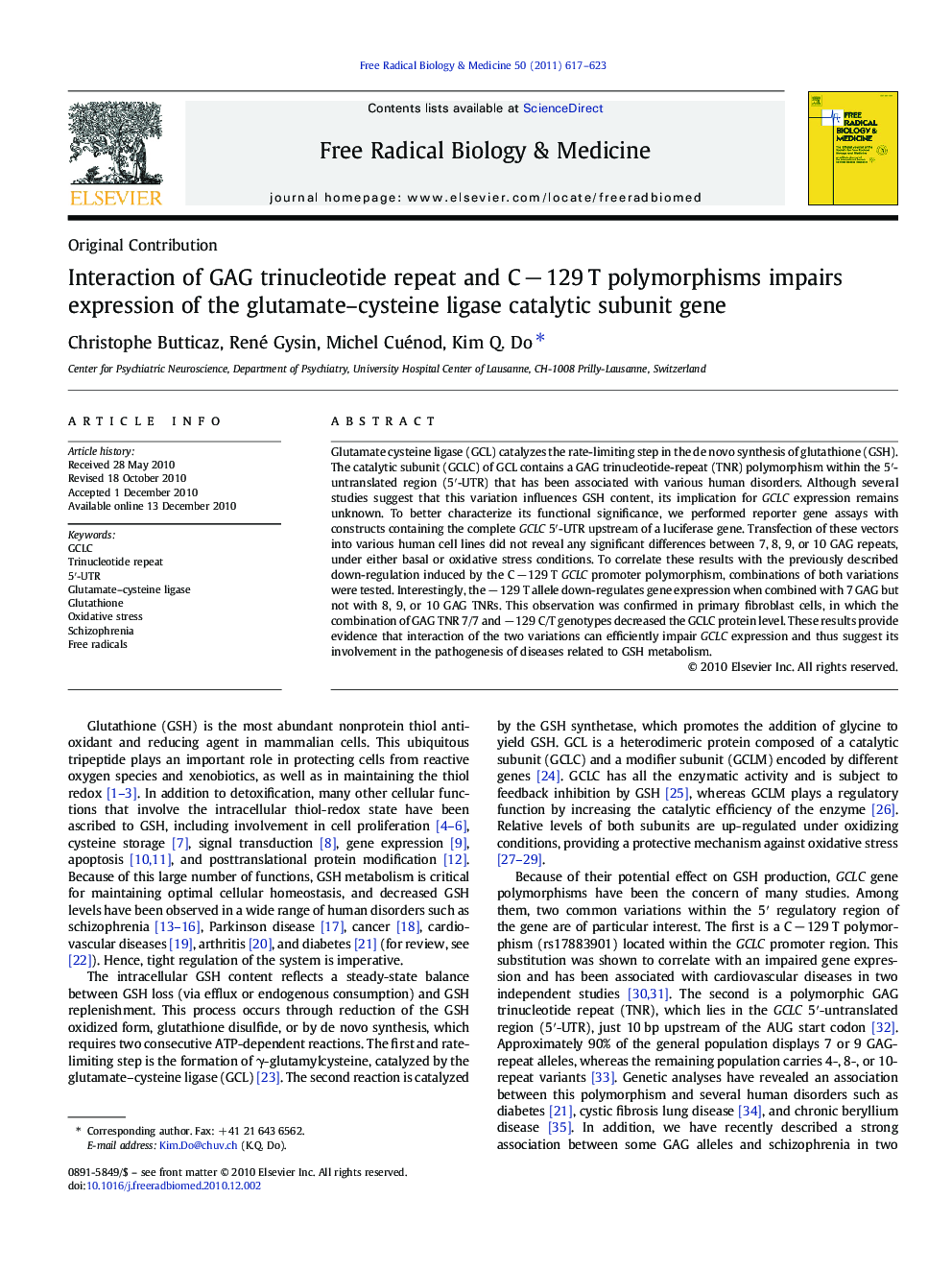| Article ID | Journal | Published Year | Pages | File Type |
|---|---|---|---|---|
| 10738575 | Free Radical Biology and Medicine | 2011 | 7 Pages |
Abstract
Glutamate cysteine ligase (GCL) catalyzes the rate-limiting step in the de novo synthesis of glutathione (GSH). The catalytic subunit (GCLC) of GCL contains a GAG trinucleotide-repeat (TNR) polymorphism within the 5â²-untranslated region (5â²-UTR) that has been associated with various human disorders. Although several studies suggest that this variation influences GSH content, its implication for GCLC expression remains unknown. To better characterize its functional significance, we performed reporter gene assays with constructs containing the complete GCLC 5â²-UTR upstream of a luciferase gene. Transfection of these vectors into various human cell lines did not reveal any significant differences between 7, 8, 9, or 10 GAG repeats, under either basal or oxidative stress conditions. To correlate these results with the previously described down-regulation induced by the C â 129 T GCLC promoter polymorphism, combinations of both variations were tested. Interestingly, the â 129 T allele down-regulates gene expression when combined with 7 GAG but not with 8, 9, or 10 GAG TNRs. This observation was confirmed in primary fibroblast cells, in which the combination of GAG TNR 7/7 and â 129 C/T genotypes decreased the GCLC protein level. These results provide evidence that interaction of the two variations can efficiently impair GCLC expression and thus suggest its involvement in the pathogenesis of diseases related to GSH metabolism.
Keywords
Related Topics
Life Sciences
Biochemistry, Genetics and Molecular Biology
Ageing
Authors
Christophe Butticaz, René Gysin, Michel Cuénod, Kim Q. Do,
